Abstract
In Israel’s vegetable production, cucumber is expected to record the largest yield of 80.5 kt in 2022, establishing itself as the leading arable vegetable. Cucumber production is mainly driven by a mild climate and advanced agricultural techniques, particularly efficient greenhouse cultivation. To overcome land constraints, Israeli agriculture focuses on making the most of limited area, with efficient water management techniques and high-tech agriculture being key. Tomato production is divided according to its intended use, with tomatoes for processing and those for eating raw being produced using different cultivation methods. Tomatoes for processing are primarily grown intensively and with an emphasis on cost-efficiency. On the other hand, when it comes to tomatoes for eating fresh, the emphasis is on quality, and varieties that aim for high added value are cultivated in particular. In terms of land use, fruit vegetables (tomatoes, cucumbers, etc.) dominate, while the share of leafy vegetables and root vegetables tends to be relatively low. Israeli agriculture places particular emphasis on efficient land use and water resource management, and is also making progress in adapting to climate change.
Production (by vegetables)
A notable trend in Israeli vegetable production is typified by fluctuations in cucumber production. Cucumbers peaked at 148kt in 2003, but have been declining since then, falling to 80.5kt by 2022, which is 54.3% of the peak. This decline is not just related to changing market demand, but also to technological innovations and evolving cultivation methods. Advances in greenhouse and hydroponic cultivation techniques have made it possible to grow cucumbers efficiently on smaller areas of land, and cucumber production has shifted to a more stable and intensive production regime than at its peak. In addition, the production volume of vegetables other than cucumbers also fluctuates from year to year, with fruit vegetables such as tomatoes and peppers continuing to occupy an important position in particular. Israel continues to develop technologies to make the most of its limited land and water resources, aiming to improve agricultural efficiency, which affects fluctuations in production volumes. Additionally, climate change and shifting market demands are also affecting production, making new technologies and sustainable agricultural practices more important in the future.
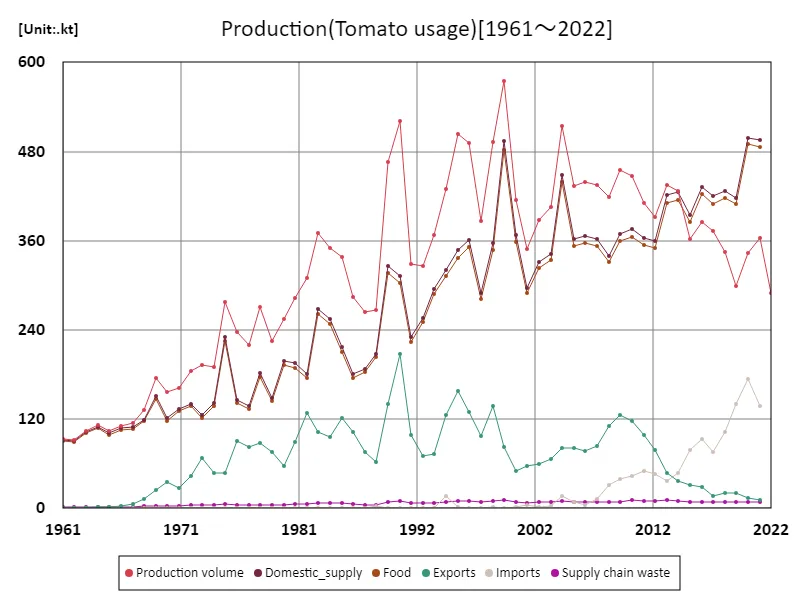

The maximum is 575kt[1999] of Production volume, and the current value is about 50.4%
Yield(by vegetable)
Cucumber is a particularly important crop in Israel’s vegetable production, with peak yields of 111 t/ha in 2007. However, the yield has now fallen to approximately 87.5t/ha, which is 78.9% of its peak. The reasons behind this decline include the stabilization of yields and improved productivity due to advances in agricultural technology, as well as changes in market demand and cultivation methods. The decrease in cucumber yield does not simply mean a decrease in production, but also indicates an improvement in cultivation efficiency. Israel has adopted advanced techniques such as greenhouse and hydroponic cultivation to maximize yields with limited land and water resources. This makes cultivation more efficient than traditional large-scale cultivation, and while production volume per unit area remains high, the expansion of cultivation area has been modest. In addition, cucumbers and other fruit vegetables are crops that are sensitive to climate and water resources, so the effects of climate change cannot be ignored. Therefore, in parallel with advances in agricultural technology, adapting to climate change has become an important issue in terms of fluctuations in production volume. The introduction of efficient and sustainable agricultural techniques will likely remain key to supporting cucumber production in the future.
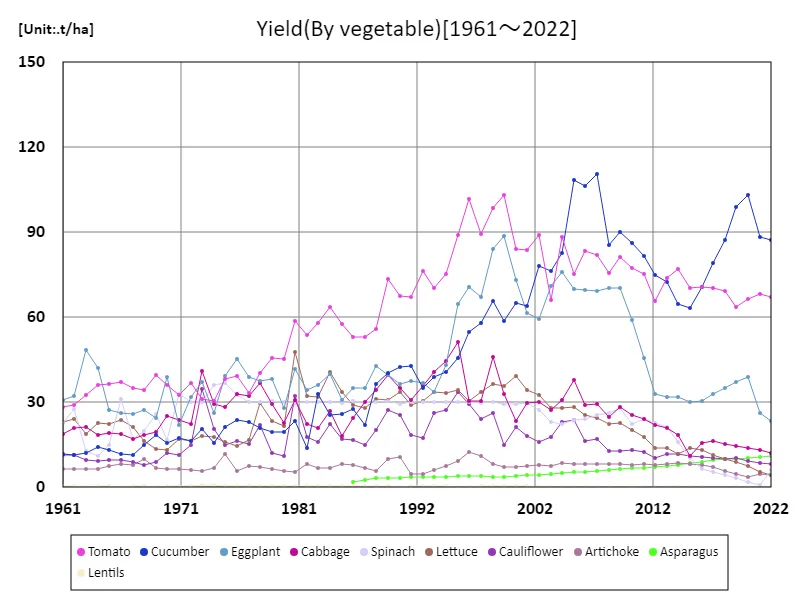

The maximum is 111t/ha[2007] of Cucumber, and the current value is about 78.9%
Land use (by vegetables)
According to land use data for vegetable production in Israel in 2022, tomatoes occupy the largest area, recording 4.31 kha. This indicates that tomatoes are a very important crop in Israeli agriculture, and are cultivated extensively due to high demand, mainly for processing and eating fresh. The cultivation area for tomatoes is particularly large among fruit vegetables, and thanks to advanced efficient greenhouse cultivation techniques and water management, high production is ensured even on limited land. On the other hand, the average land use area is 1.71 kha, and many other vegetables are grown on a relatively small scale compared to tomatoes. With a total land area of 17.1 kha, Israeli agriculture is relatively land efficient, achieving high productivity, especially given limited water resources. Efficient land use is closely linked to innovations in agricultural technology, and advances in greenhouse, hydroponic and irrigation technologies have made it possible to achieve high yields on smaller areas. These trends are expected to continue to lead to optimal use of land and water resources, along with technological innovations towards sustainable agriculture.
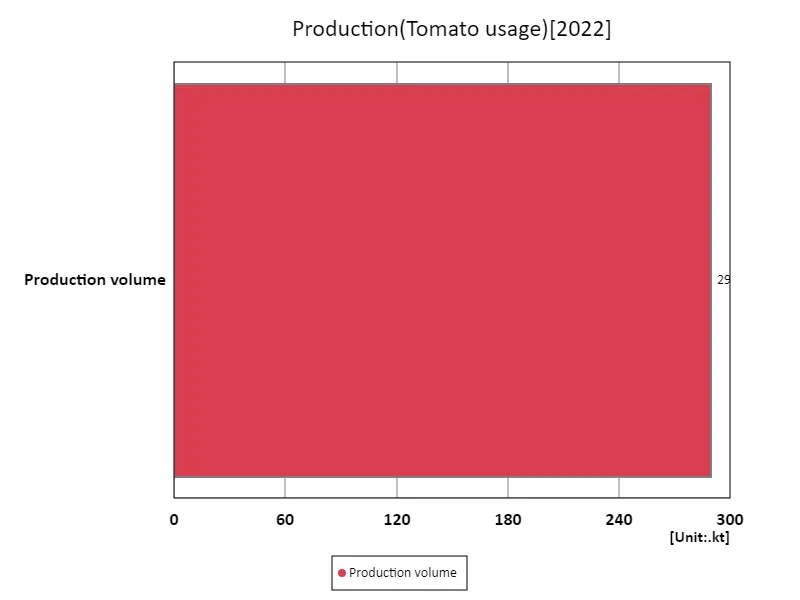

The maximum is 290kt of Production volume, the average is 290kt, and the total is 290kt
Tomato usage
Between 1961 and the present, Israeli tomato production has undergone major changes. In particular, when it comes to the production volume of tomatoes by use, the balance between those for processing and those for fresh consumption is an important feature. In 1961, tomato production reached a peak of 575kt, and at this time production was mainly for eating fresh. However, as time went on, the production of tomatoes for processing increased, and now there is a balance between those for processing and those for eating fresh. In terms of tomato production by use, the increase in the production of tomatoes for processing is due to the expansion of demand in the processing industry both domestically and overseas, and the growth of the export market. Processing tomatoes are made into a variety of products, including juice, paste and sauce, and demand has strengthened, especially for export. In contrast, tomatoes for fresh consumption are produced steadily, mainly for the domestic market and to a certain extent for export. In addition, cultivating tomatoes requires advanced skills, and advances in greenhouse and hydroponic cultivation techniques have made it possible to efficiently utilize limited land and water resources. In this way, tomato production responds flexibly to technological innovations and changes in market demand, and production strategies that adapt to changes in the market will continue to be important in the future.
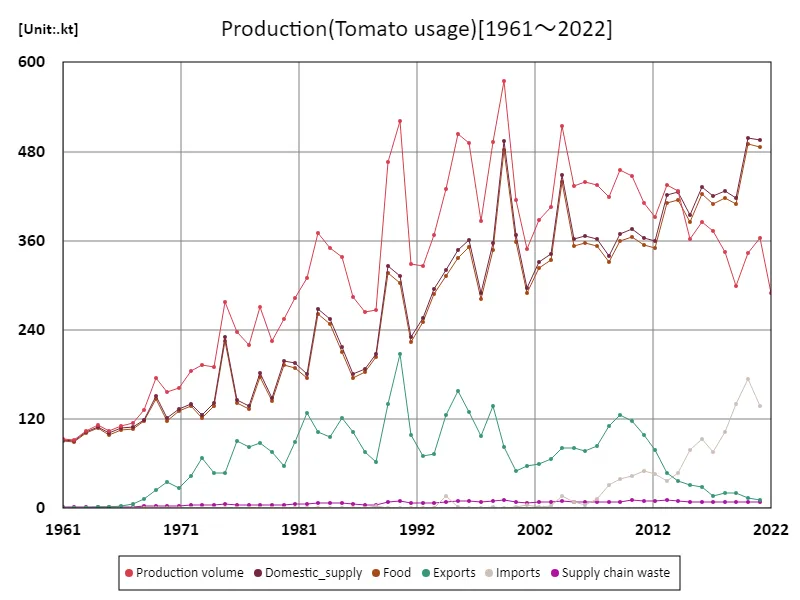

The maximum is 575kt[1999] of Production volume, and the current value is about 50.4%
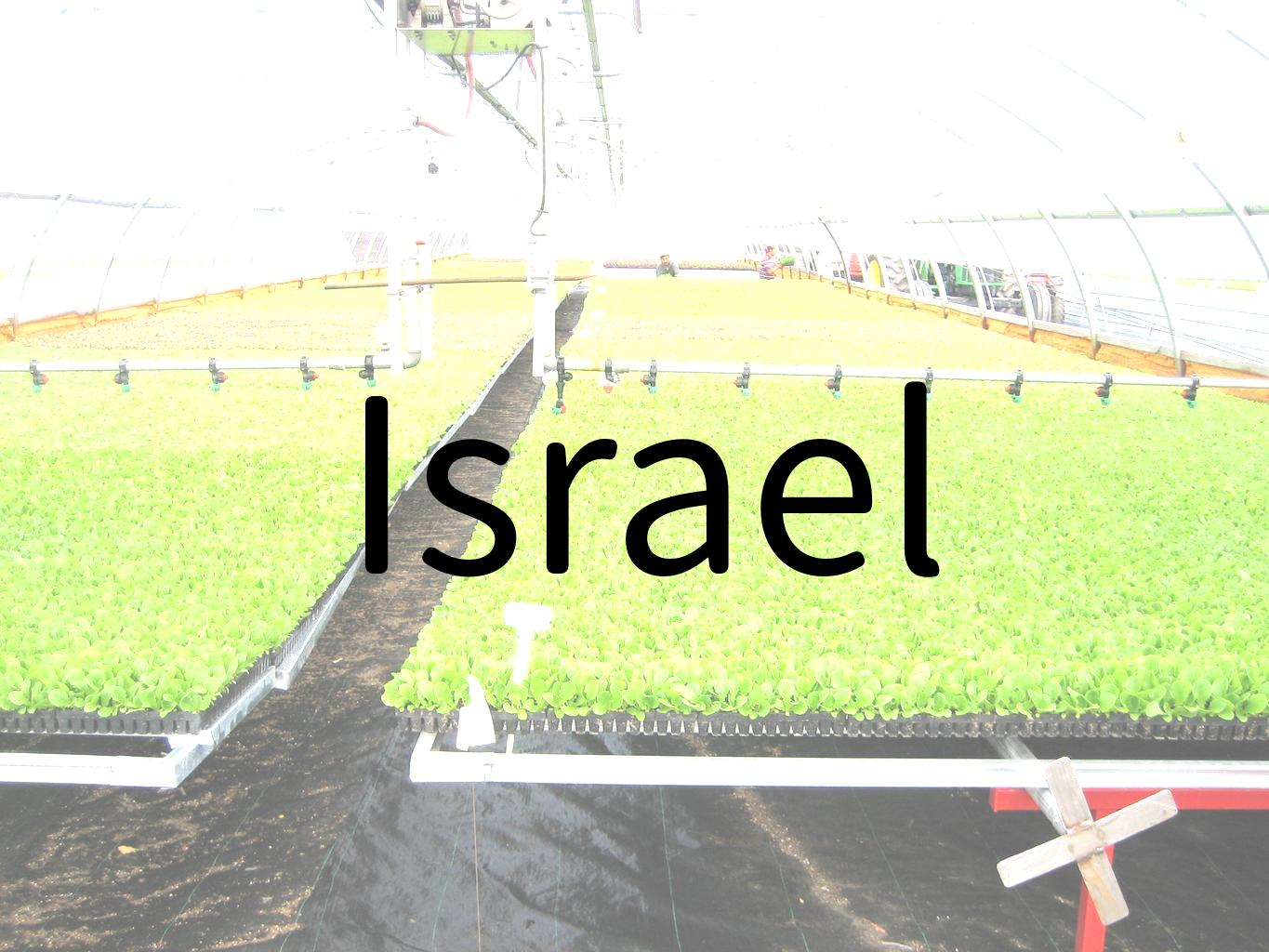


Comments